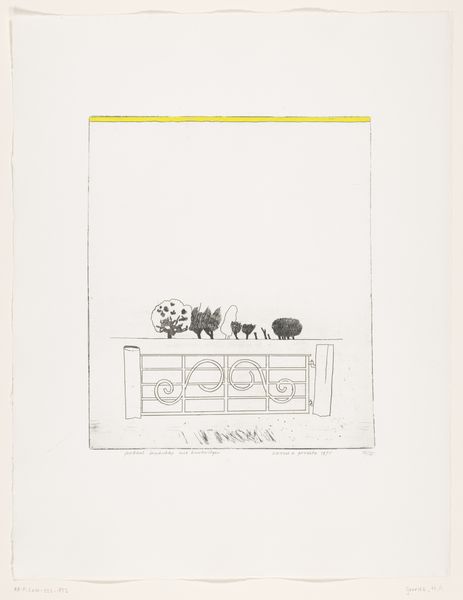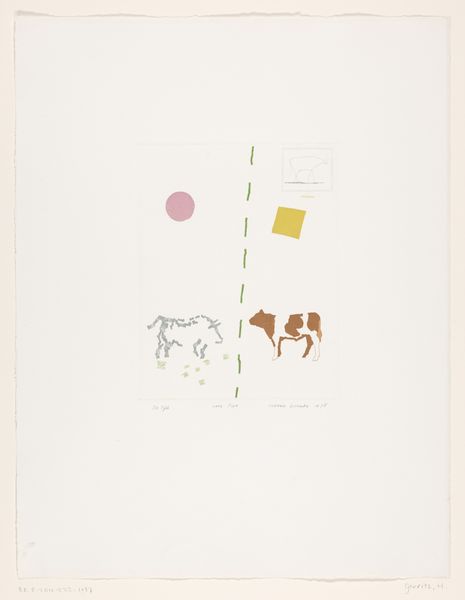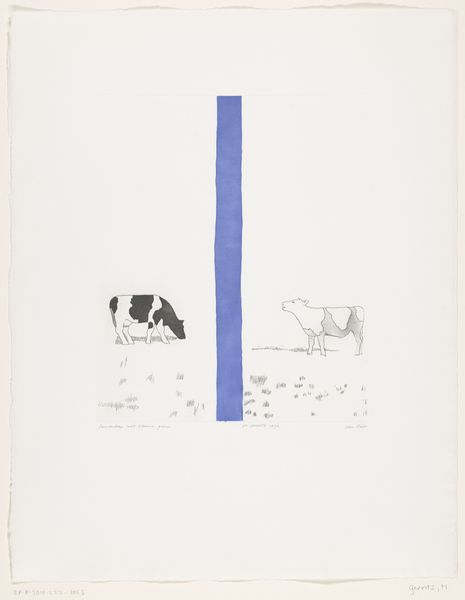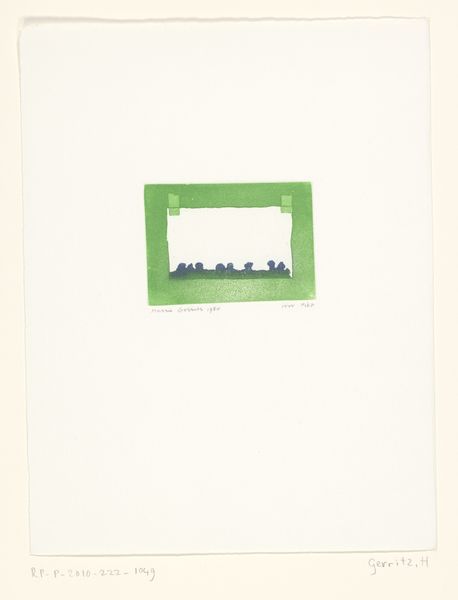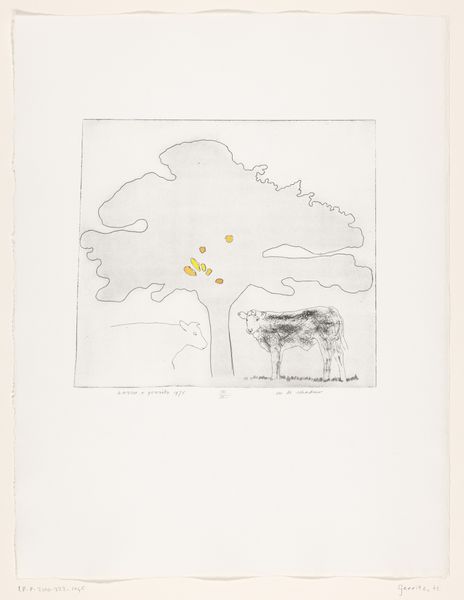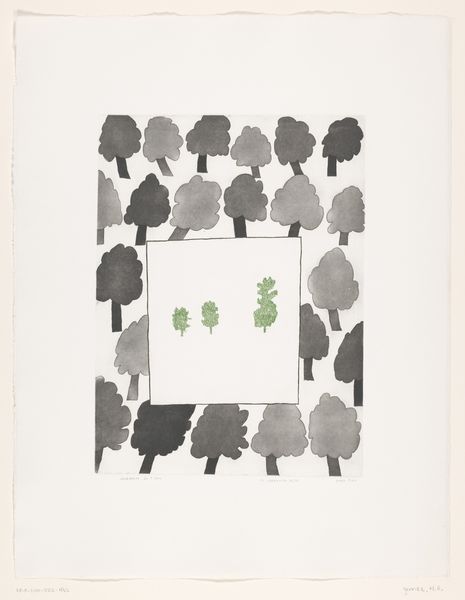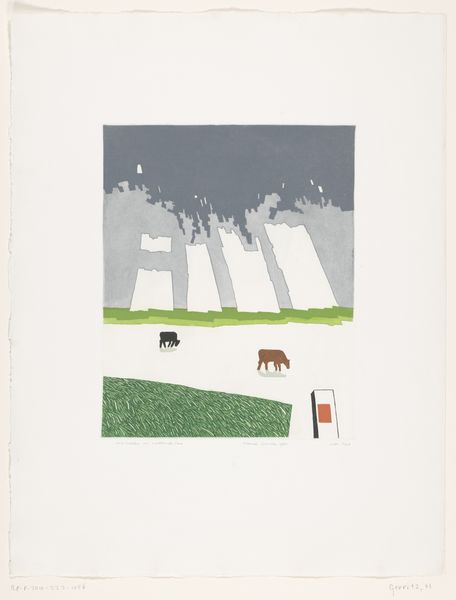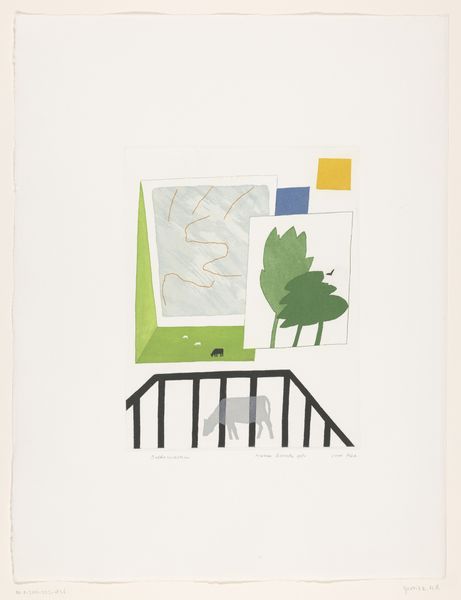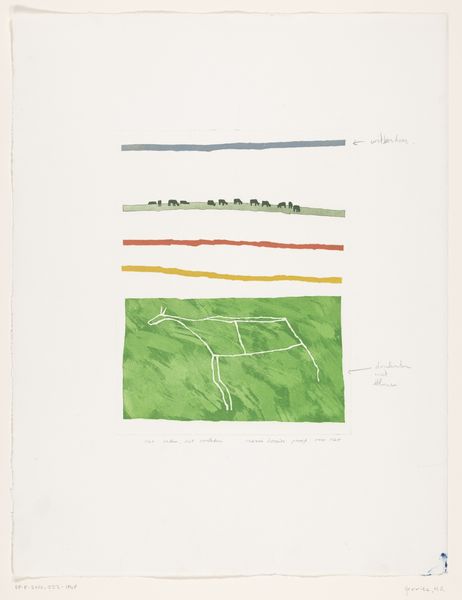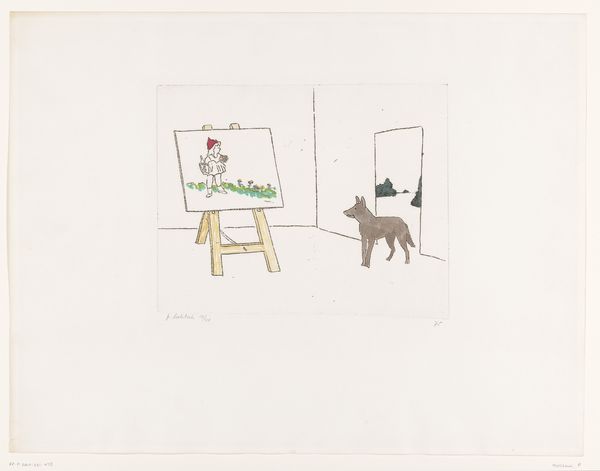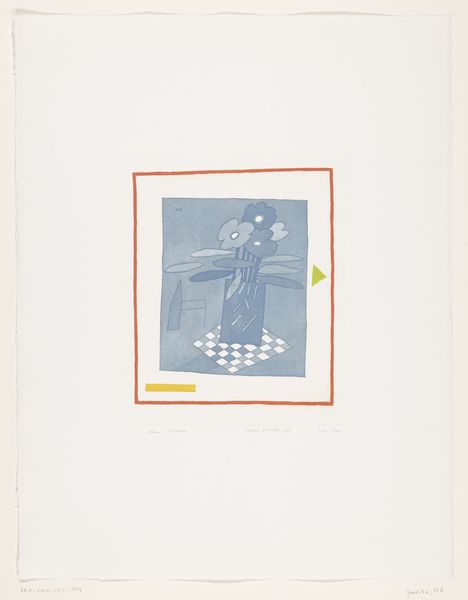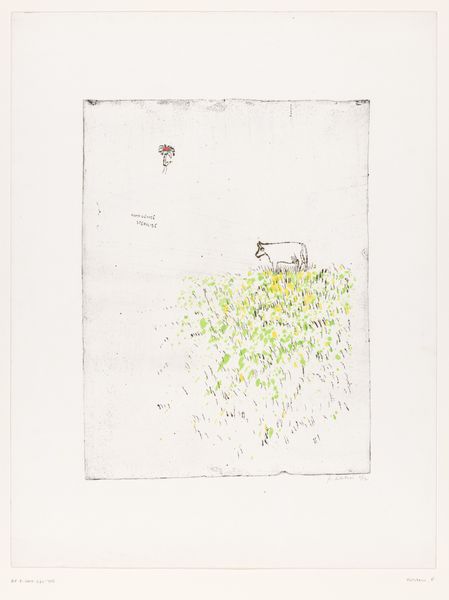
graphic-art, print
#
graphic-art
# print
#
landscape
#
figuration
#
geometric
#
abstraction
Dimensions: height 328 mm, width 250 mm, height 170 mm, width 125 mm
Copyright: Rijks Museum: Open Domain
Curator: Here we have Harrie Gerritz's "Traum," a graphic print created in 1980, now part of the Rijksmuseum's collection. Editor: My first impression? There’s something unsettling about its simplicity. The isolated cow within the blue square feels dreamlike but also somewhat lonely under that looming black shape above. Curator: It’s interesting you say that. Considering the historical context, this work emerges during a period when many artists were grappling with the after-effects of post-war austerity while also contemplating the rapidly modernizing agricultural landscape. Editor: I’m more struck by the composition itself. The interplay between the geometric abstraction and the representational figure of the cow. The solid black form echoes the solidness of the cow but its jagged outline opposes the square's symmetry. Curator: I see the abstraction, of course, but for me it’s inseparable from its cultural moment. Gerritz’s work often engaged with representations of rural life in the Netherlands, perhaps subtly commenting on its changing character in the face of modernization. The title "Traum," meaning "dream" in German, might indicate a longing for an idealized past. Editor: Possibly. But "Traum" also suggests something unreal. The pale colors and basic shapes create a pictorial logic that distances the image from any sort of photographic reality. That stark pink dot—the sun, I presume?—it almost flattens the landscape. Curator: True. Gerritz had a real knack for subtly critiquing institutional power dynamics through deceptively simple imagery. His artwork, "Traum", also speaks to the socio-political landscape of its time, using symbols of everyday rural life. Editor: It's definitely a fascinating dialogue between form and cultural messaging. Ultimately, Gerritz delivers to the viewer something ambiguous and hauntingly beautiful, a minimalist landscape imbued with a deep sense of unease. Curator: I agree, the tensions and balances that you point out create a compelling piece that keeps us reflecting on its meanings and cultural connections.
Comments
No comments
Be the first to comment and join the conversation on the ultimate creative platform.
